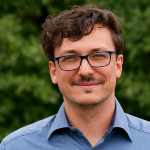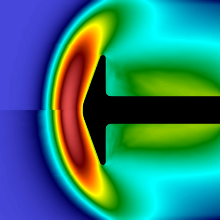Numerical simulations of fluid dynamics in space applications, micro and nano flows, as well as vacuum technology present significant challenges. Often, these applications involve large density gradients, ranging from the continuum to the free molecular flow regime, and require versatile numerical approaches due to their multi-scale and non-equilibrium nature.
Since the computational complexity of the well-established DSMC method increases significantly for smaller Knudsen numbers (i.e. in the transition and continuum region), various particle continuum methods have been introduced in recent years that are able to treat flows in these regions more efficiently. The main advantage of these methods compared to classical CFD methods is the simple coupling with DSMC, since these methods also use particles to describe the flow field. The Bhatnagar-Gross-Krook (BGK) and Fokker-Planck (FP) approximations for the Boltzmann collision operator are two prominent examples, both of which are implemented in the open-source code PICLas. The basic idea of the these models is that the Boltzmann collision term is approximated by particle relaxations. The particle distribution function is relaxed with a certain relaxation frequency, which depends on the transport coefficients of the flow, in the direction of a target distribution function. For moecules, the rotational and quantised vibration energies are relaxed additionally.
The options for treating gas mixture flows and molecules with internal degrees of freedom with the BGK and FP models are implemented in PICLas. The models have been validated in detail with various supersonic Couette flows and hypersonic flows around a truncated 70° cone, which showed an overall very good agreement with the DSMC method while at the same time significantly reducing the calculation time.
Looking at space applications, e.g. space vehicles are exposed to very high temperature flows during re-entry. This not only leads to significant excitations of the inner degrees of molecules, but also to a significant amount of chemical reactions occuring in the gas flow, which is why chemical reactions based on Arrhenius equations are currently implemented for both the BGK and FP models in PICLas.
Contact

Franziska Tuttas
M.Sc.Research Associate




